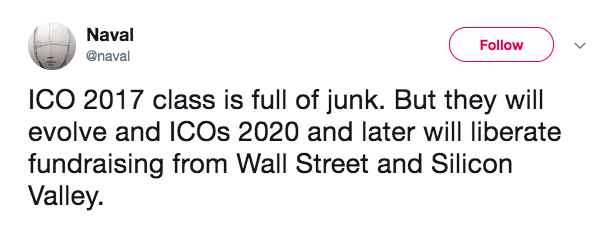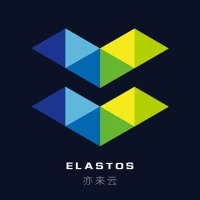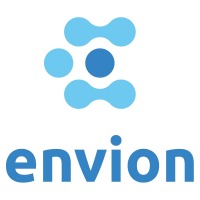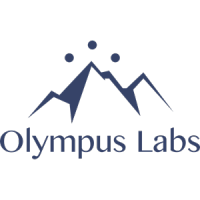2017 was the year of the ICO. As crypto went mainstream(ish) the money came flooding in, and in December of last year, the amount of capital ICOs raised broke 7 figures. As we move deeper into 2018, it doesn’t seem as if this trend has cooled off in the slightest. According to Coinschedule, there has already been over 300 ICOs this year, and in March alone, $2,944,545,007 was raised.
Some people bemoan ICO investing as a minefield rife with scams, hucksters, and projects destined for zero. The Wall Street Journal recently published an exposé on some of the shenanigans.
However, some choose to focus on the bad and the good:

It’s undeniable that ICOs have created something of a bubble and driven the false inflation of numerous projects, but they’ve also helped to unpair the advice, control, and money that VCs used to have a monopoly on. Ultimately, losses will drive out inexperienced investors and the skeptical money will demand more.
If you’re one of the people who hopes some of these trends have begun to cleanse the ICO space, there are a few positive signs, but we’re certainly not there yet. While this may be true, it also doesn’t negate the fact that there are some really exciting projects which could be considered great investments.
In the following, we take a look at the 5 most successful ICOs of 2018 so far, based on the amount raised.
Bankera

Bankera, the “regulated digital bank for the blockchain era,” made news after their wildly successful ICO concluded on March 1, 2018. During the crowdsale, Bankera’s Lithuanian team managed to raise over $150 million from over 100,000 people interested in helping fund their vision.
Bankera is a blockchain platform that offers users all the services of a traditional bank but in a totally decentralized manner. Underpinned by progressive blockchain technology, adherence to compliance, and a large capital base, Bankera will give users the full ability to transact using cryptocurrencies.
Many ICOs do little more than sell investors on a vision (sometimes based on little more than a cobbled together whitepaper). But in the case of Bankera, they already have the required IT infrastructure to facilitate payment processing and issue personal IBANs or payment cards. They’ve also got a minimum viable product completed (SpectreCoin), which comes with an associated exchange, wallet, and card services. According to their official website, SpectreCoin has 810,000+ clients and already issued 65,000 prepaid cards for fiat withdrawal and everyday use.
Where Are They Now?
Having completed a working version of the Bankera wallet, the team is currently focused on the launch of their exchange, which is reportedly scheduled for the “first half of 2018.” As we approach the end of this time allotment, it will be critical to see if the team can hit the milestone on time.
Throughout the month of May, Bankera has also been testing their BNK smart contract, and they just announced that the auditing of it had been successfully completed.
To read a more in-depth update on the project, check here.
Elastos

Elastos, the “smartweb powered by blockchain,” will get its place in the crypto history books after raising almost $95 million in a token sale that ended on January 23, 2018. What got investors to pony up this much capital?
The answer is no less than a comprehensive vision for the future of the internet. Elastos is building a secure blockchain operating system that will help people to “turn digital assets into wealth.”
Elastos is another project looking to take the groundwork laid by Bitcoin and Ethereum and try to springboard it to the next level. It will achieve this by adding further functionality, such as monetizable dapps and digital assets, unique digital identifiers for all users, a runtime operating system (that farms work out to devices instead of the network), and, of course, an SDK.
Elastos allows for ownership rights for digital assets to be verified and protected while providing more opportunity for owners to profit from said assets. There’s been a lot of hype surrounding Elastos, and this is partly because of their close connection to fellow Chinese project NEO. But a lot of it can also be attributed to an exciting vision, a talented team, and solid tech.
Where Are They Now?
Elastos is doing something radical and far more ambitious than many other projects, and it’s makes gauging progress a challenge. That said, Elastos mainnet is already live, and there have been demonstrations of it working on iOS.
In recent months, its social media channels have been awash with numerous events and meetups involving Elastos. If the roadmap can be believed, the next targets are a sidechain whitepaper and a simplified verification system. At the time of writing, the ELA token sits at #72 on Coinmarketcap with a price hovering around $40.
Envion

Envion, a platform for “off-grid blockchain mining,” makes our list by raising close to $100 million before concluding its ICO in January 2018. This amount actually puts Envion comfortably within the top 10 ICOS of all time. Despite this enormous show of investor confidence, the Envion project has already run into legal disputes. Let’s explain.
It should first be said that this is a project with a lot of merit and some exciting ideas behind it. Envion is tackling the issue of vast energy consumption (some might say waste) behind cryptocurrency mining.
Their solution is basically to pack shipping containers with cheap, scalable mining hardware, and deliver those shipping containers anywhere in the world where they can access cheap, abundant sources of energy. Envion is using patented cooling technology to make their containers more efficient than traditional data centers, capitalizing on areas of excess solar energy, and, of course, organizing it all via a decentralized system.
This creates an “indefinitely scalable solution” and is a marked improvement on the current state of affairs.
Where Are They Now?
Now here’s the controversial part: the founding team of Envion is currently taking legal action against CEO and managing director of Envion AG, Matthias Woestmann, whom they accuse of “unlawfully securing a majority stake in Envion AG in breach of contractual obligations.”
Envion AG is a blockchain startup which produces the cryptocurrency mining containers to be used for the project. The Merkle has a complete write-up on this story (read it here), but the upshot is that until this internal acrimony is resolved, the project is at best stalled and at worst paralyzed.
Zeepin

Zeepin, the “decentralized creative economy based on blockchain,” launched an ICO on NEO early in 2018 that went on to garner over $62 million in funding. Zeepin is a blockchain-based platform intended to let creatives better participate and thrive within the new “smart economy.”
The aim of the Zeepin platform is pretty simple. It provides more protection, more recognition, more connection, and more support for everyone in creative industries. As things currently stand, protecting copyrights is a tricky and inefficient process because mutual trust is so hard to come by and work is so easy to rip off. The Zeepin blockchain platform is being built to remedy the situation.
These problems are being addressed through features like asset digitization, anti-counterfeiting features, rights confirmation, crowdfunding, and the incubation of creative assets. The Zeepin Blockchain is designed for data-intensive dapps that will help facilitate the above.
Zeepin will use smart contracts to streamline transactions and remove a layer a trust. They will also offer up things like Zeecrew and Zeerights, tools to help users build autonomous teams and check IP rights. In sum, Zeepin is building an innovative platform that will breathe life into a borderless and transparent new economy with its own ZPT token at the center of it.
Where Are They Now?
Quite a few miles have been logged since the Zeepin ICO. In April, the Zeepin platform launched its testnet (mainnet said to be coming in July), and the focal points for May are said to be internal testing and upgrading of Zeerights, a new exchange, another partnership announcement, and the first major update of the Crypto Galaxy app.
The Zeepin wallet is currently in closed-beta testing, and the most recent update from the team indicates that progress on both of Zeepin’s chains (one public, one consortium) is steaming along as well.
Olympus Labs

Olympus Labs (not to be confused with the supplement company) is a “blockchain financial ecosystem” based on the Olympus Protocol. Designed for the “decentralized creation of cryptocurrency-based financial products,” Olympus Labs raised a cool $60 million during their token sale, which ended in January 2018. Olympus Labs’ pre-ICO sales were so successful that they ended up canceling the public crowdsale.
What exactly is Olympus Labs up to? They’re building things based on the belief that in the new crypto landscape, there is a real need for financial tools and protocols. Olympus Labs provide the tools for in-house and third-party developers to build products that include exchanges, market analytics tools, and payment services (among others).
Olympus labs will provide a web portal, SDK, and APIs for creators to easily create financial products. This is all being done with tech and non-tech users in mind, which leaves the door for broader adoption wide open. The cornerstone of Olympus labs’ approach is a decentralized exchange, and, like many others, they’re searching for a solution to the issue of how 2 parties from different blockchains (who do not trust each other) can execute a transaction.
Whether or not they achieve this remains to be seen, but there are exciting indications and it’s certainly a project to keep an eye on.
Where Are They Now?
The last few months in the Olympus Labs’ camp have been busy ones. A freshly released roadmap update shows ambitious targets for the app (which is already launched, with just updates and fixes being implemented), the web portal, the SDK, and the exchange. They’ve affirmed partnerships with Kyber Network, CIvic Key, and Digix Global. They also conducted an MOT token airdrop, with the idea that the airdrop will recruit new users and drive adoption.
Final Thoughts
We may not be close to the future foreshadowed by Naval, but that doesn’t necessarily mean than ICO investing should be off limits. It just must be approached with heightened caution, and done within the context of a careful risk management strategy. There’s nothing wrong with loading a few bags for the high risk/high reward category and seeing what happens.
With the exception of Envion (until legal uncertainty is resolved), all of these projects may be considered good long-term investments post-ICO as well. The big slide of a few months ago and the relatively flat performance since then has meant that most of these tokens haven’t really taken off yet. And in many cases, they may be had at much lower prices than January or February. As with all things crypto, time will tell.
Related: 5 ICOs to Watch May and June 2018

